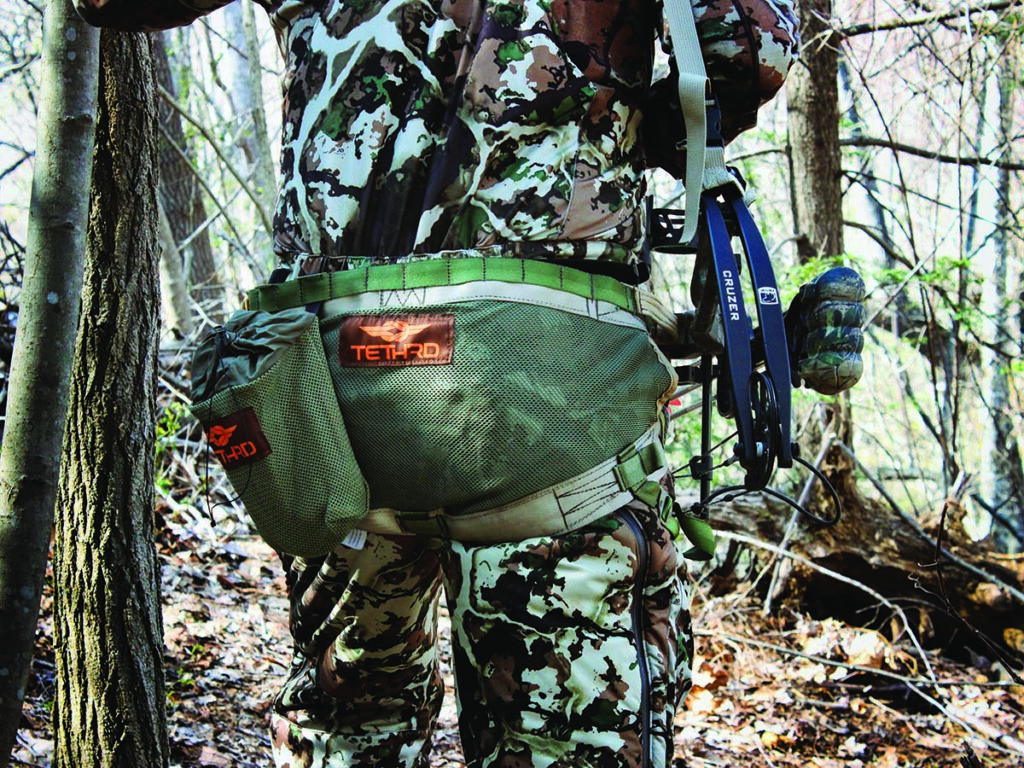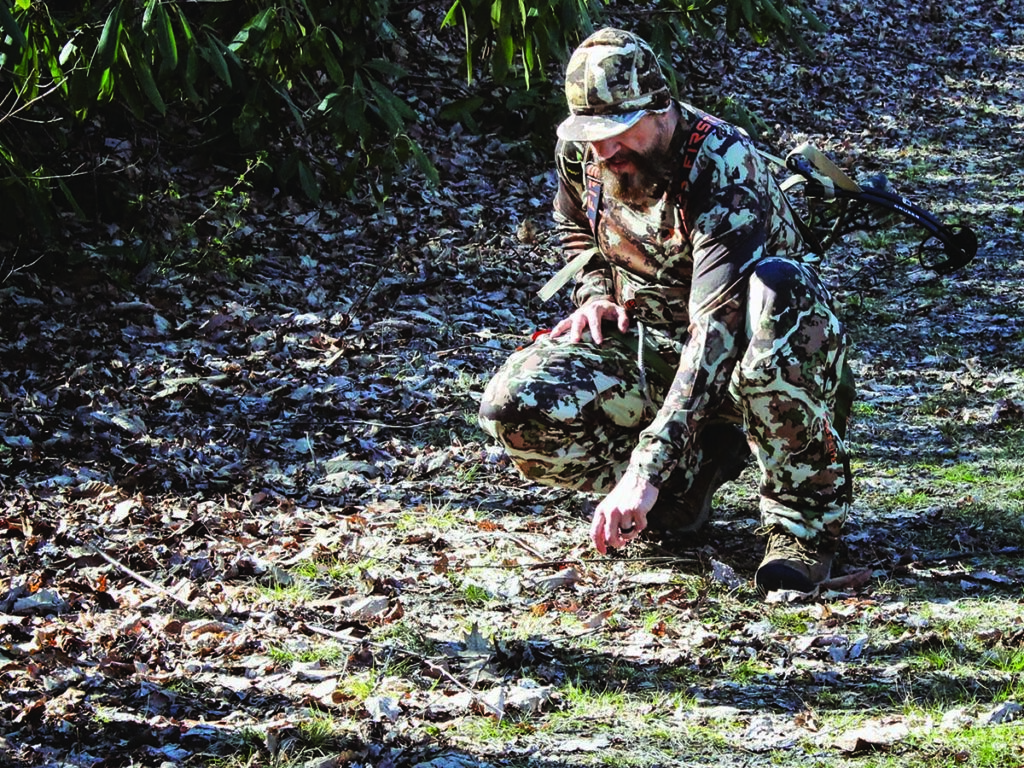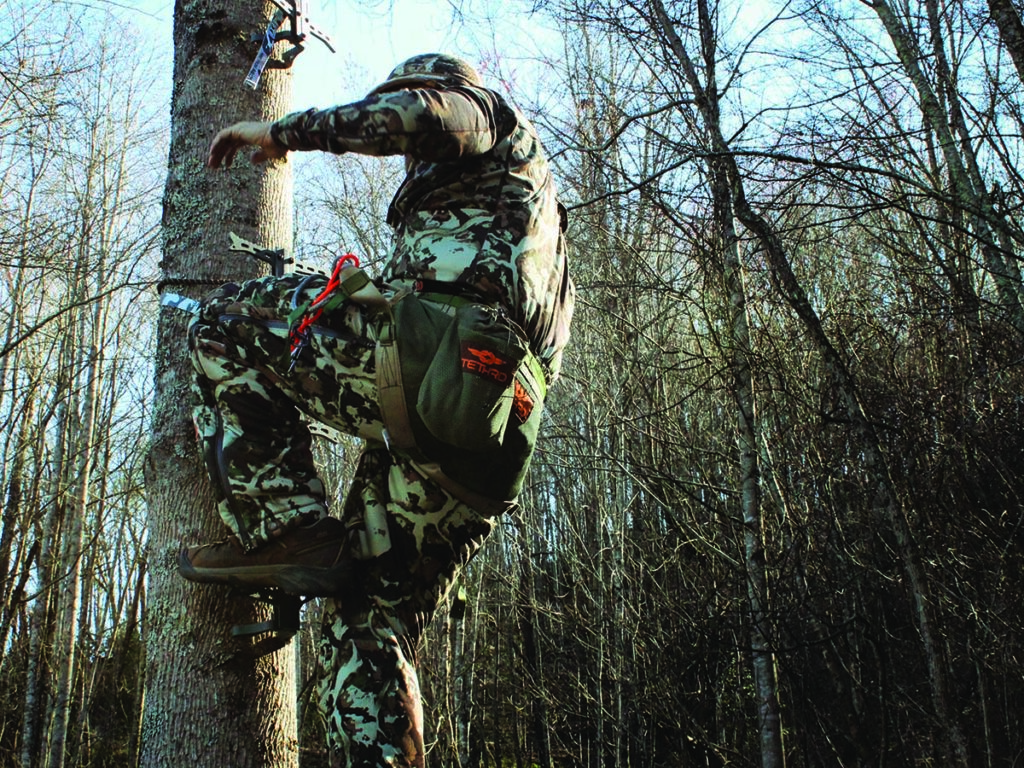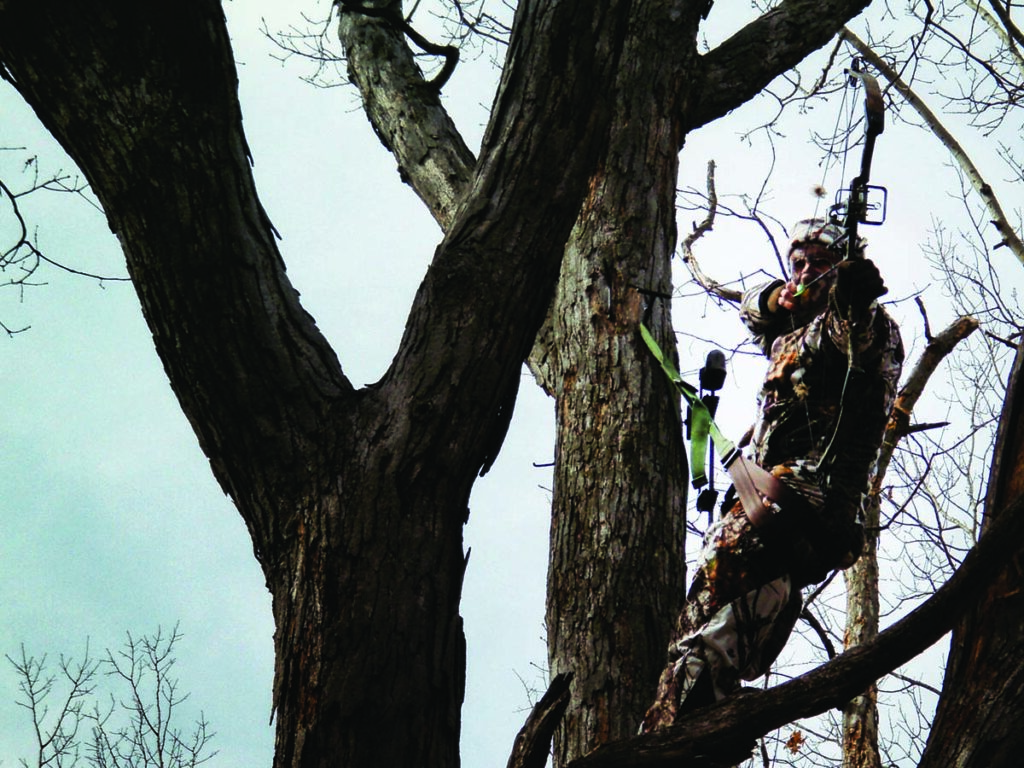At CarnivoreWeb.com, we independently review products and outfitters. However, we may earn a commission when you purchase products through links on our site. Read our affiliate policy. Read about how we test products.
Lightweight, versititle and deadly.
Mark Twain once quipped that, “Travel is fatal to prejudice, bigotry, and narrow-mindedness, and many of our people need it sorely on these accounts.” To many who for years maintained a negative image of hunters as caricatures of bumbling Elmer Fudds or dip-spit’n hillbillies, being exposed to their first hunts has proved the antidote to these preconceived notions.
Many of these new hunters are coming from backgrounds and demographic groups that were traditionally either nonhunters or anti-hunting — namely urban millennials or suburbanites. While some of these fresh hunters may be attracted to the idea of locally gathered, organic meat or to a newly acquired understanding of the role hunting plays in sustaining healthy wildlife populations, many are drawn to the concept of simple self-sufficiency. The chance to harvest, process, and feast is the penultimate act of the liberated individual.
The newer crop of hunters makes up for what they lack in experience and knowledge with the enthusiasm of the unhindered neophyte. Many aren’t carrying on the traditions and hunting lore of grandpa. They’re learning from peers or trying out new or now-forgotten techniques of huntsmen past. Many prefer a do-it-yourself ethos over the gotta-have new gadgets, and value skills over technological shortcuts. Both these new hunters and in-the-know veterans are finding their niche in the (almost) lost art of saddle-hunting.
What Is A Tree Saddle?
Hunting from a tree saddle, which involves forgoing the traditional ladder stand seat affixed to a tree and instead using a strap-on sling, spans back to the 1980s and earlier.

A hunter using a tree saddle ascends a tree in a variety of ways, most methods being a variation on the way an arborist or linesman climbs. Once the hunter reaches the desired height and position, a tether is wrapped around a tree. The tether strap is then attached to a “saddle” (imagine a playground swing-set seat, but with the attachment being at the waist) and then one hangs comfortably with feet perched on a platform or step.
Hunters choose this method of hunting for various reasons and, contrary to the opinions of some, not related to a high-altitude death wish. Public land hunters are particularly enamored with the small size and weight of modern tree saddle rigs. Most tree saddles weigh 1 to 4 pounds (in contrast to a 12-pound climbing stand) and can be stuffed or even just worn around the waist on the hike into the woods. A full tree saddle, ring platform, tether, and gear hooks can fit into an army surplus utility pack and weigh less than a lunch and a Thermos.
One of the most recognized whitetail hunting experts who has made a career of hunting exclusively from a tree saddle is John Eberhart. Eberhart has logged more hours in a tree saddle than most people have spent in a car seat and knows more about whitetails than most will know in a lifetime. Students of deer hunting travel from all over North America to attend the Eberhart Whitetail Workshops and with good reason; Eberhart has 19 Pope & Young bucks and 31 deer listed in the Commemorative Bucks of Michigan, all taken on public lands or through knock-on-door permissions. None of his 50 record bucks were taken on managed properties.
As one of the earliest and most successful tree-saddle hunters, Eberhart recounts his transition to saddle hunting.
“In 1981, I purchased an Anderson TreeSling and nobody knew anything about them, how they worked or how to set up in them. I was intrigued due to its light weight and compact size,” he said. “Although, I could immediately see the huge advantages it had over any conventional stand, it was uncomfortable and awkward to say the least. However, knowing that if I learned how to use it, it would up my kill opportunities big time, so that’s exactly what I did. It took me a couple seasons to learn how to be comfortable in it and then made several modifications to make it work even better.”

Tree Saddle Advantage
Personal modifications to tree saddles and the infinite variations of climbing methods are one of the trademarks of this hunting system. Once you’ve tweaked your rig, carrying system, platform and climbing methods, you have the most adaptable tree hunting system available.
The most compelling reasons for choosing a tree saddle are mobility and versatility. Since the hunter is tethered by a single strap and facing toward the tree, he can stand, lean, or sit in any position or orientation around the trunk of the tree.
“With a saddle, you have 360-degree shooting mobility around any tree, so there are no missed opportunities like there are with conventional stands,” Eberhart says. “During the rut phases when bucks chase does on unpredictable routes, being able to take advantage of every opportunity is a huge deal.”
Tree Saddle Community
Every whitetail deer hunter knows the difficulties in pursuing this skittish and oftentimes elusive prey. Once you’ve “patterned” a deer and figured out its preferred routes, the craft is in choosing an ambush point where this animal’s acute sense of smell and sight will not give you away.

Getting up high in a tree out of the deer’s line-of-sight and keeping your scent downwind is just half the battle. As a bowhunter, trying to draw your bow quietly and without being spotted in the exposed position in a tree is a challenge requiring nerves of steel. A tree saddle allows the shooter to use the tree as cover, manoeuvring around the trunk to play a game of peek-a-boo-and-shoot with a deer approaching from any direction. But knowing how to best utilize this style of hunting efficiently and safely is best learned from others who have paved the way, before exploring the trial-and-error path yourself.
Greg Godfrey, of Tethrd Nation, one of the leading creators of cutting-edge hunting saddles and accessories, has helped define much of the saddle-hunting culture. Through companies like Tethrd, saddle hunting has regained momentum, especially among newer hunters.
“Tethrd is in the unique position of being the first brand birthed by the saddle hunting community,” explains Godfrey. “In 2014, a small group of dedicated saddle hunters banded together to help guide and advance saddle hunting tactics and equipment through an online community at www.saddlehunter.com. This community was made up of saddle hunters from all over the country who had never met but shared a common passion.”
From this “wisdom of crowds,” new ideas and hunting technology emerged.
“This community was made up of saddle hunters from all over the country who had never met, but … collectively we created solutions to problems that were unique to saddle hunting. Unfortunately, we were forced to find our gear on Craigslist, eBay, and internet classifieds because there was no retailer catering to our specific needs,” Godfrey said. “For instance, we’d buy an old Lone Wolf lock-on stand on eBay, cut off the seat, and turn it into a saddle platform. We’d buy gear intended for rock climbing or alpine adventure and repurpose it for hanging from a tree. There were three main problems that surfaced from this style of gear procurement: Firstly, gear was never perfect since it was generally repurposed; second, it required a big DIY investment of time and resources; and finally, it sometimes flirted with the edge of safety. Tethrd is nothing more a group of these original saddle hunting community members that decided to solve those three problems.”

It was through this synthesis of ideas that the Tethrd Mantis saddle was born. One of the most lightweight saddles on the market, the Mantis is easily carried or worn into the woods without adding extra gear, weight, or accessories to your hunting loadout. The mesh-like seat is permanently attached to an especially strong line called a “bridge” which provides the attachment point for the tethering rope. This bridge is made of an extremely high-strength material called Amsteel Blue, which has, for most utility purposes, the same strength as steel. Rated not for hundreds, but thousands of pounds, Amsteel Blue is used for jobs such as industrial or shipyard towing lines, rescue lifelines, and even trapezes.
Tree Saddle Tactics
In order to escape the high-pressured, high-traffic areas, a deer hunter needs to hike increasingly longer distances to find choice honey-holes. Once having found a spot, regulations limit your ability to use any stand system that’d screw into or damage tree trunks or involve clearing shooting lanes from your stand. A tree saddle’s size and weight makes it easy to carry for long distances and avoid the bulk carried noisily through tangles of bushes and branches.
Once at the desired spot, using strap-on climbing sticks and wraparound tether helps avoid any issues or restrictions regarding screw-in steps or climbing stands that rip apart tree bark. Not only does the saddle hunter reach his destination quicker and more quietly, but once at his desired height and position, he can circle around the tree, discovering or creating shooting lanes by changing the angle and position.
Eberhart emphasizes the versatility of the tree saddle over other options.

“You are able to hunt large and small diameter trees, whereas with conventional ‘hang-ons’ and climber stands, trees must be a specific size to accommodate them,” he said.
Eberhart also said, unlike a climber, trees don’t have to be telephone poles and devoid of branches in order to hunt them. Branches and crotches become steps and additional concealment.
Godrey agrees.
“The packability and light weight of the saddle allows you to be a more mobile hunter,” he said. “One of the tactics almost universally accepted by hunters who consistently kill mature bucks is ‘first sit, best sit.’ This means the first time you go into a big buck’s living room is the best time to kill him.”
Tree Saddle Safety
Probably the most pressing question a hunter considering a tree saddle ponders is whether this type of hunting is truly safe for the beginner. If you’re a hunter, you know the majority of hunting accidents and fatalities aren’t from firearm mishaps, but from tree-stand falls. Many of these tree-stand accidents are fatal, but avoidable had the hunter worn a safety fall-arrest system. The most compelling reason for using a tree saddle is actually safety, because the hunter is attached to the tree at every step of the way.
On his ascent, a saddle hunter uses a lineman’s rope wrapped around the tree much like an arborist trimming branches or a telephone pole repairman. Upon reaching a desired height, a tree-tether is wrapped around the tree, the hunter connects it to his saddle, and then removes the lineman’s belt. As veteran saddle hunter Eberhart points out that thousands of hunters have fallen when stepping onto or from conventional stands, when properly hunting from a saddle you’re tethered to the tree from the moment you leave the ground until you step back on it after the hunt … so you can’t fall.
Eberhart adds, “Hunting from a saddle is a concept that flies against the grain of conventional tree stand manufacturers that want to sell hunters a stand for every one of their hunting locations.”
As with many new hunting methods, saddle hunting actually has a long history and a large and passionate community of followers espousing its effectiveness, versatility and safety. As more, new people enter the woods and the ranks of hunters, there will be those open to fresh ideas. Veteran saddle hunters perched high amongst the branches will look bemused as they see the truth in the axiom, “what is old is new again.”
Tethrd Mantis Specs
Included: Fixed ¼-inch Amsteel Blue bridge at 30 inches. Dedicated lineman loops. MOLLE attachment system for modular accessory upgrades.
Construction: Mil-Spec Mesh
Weight: 15 ounces: Size M, 16.8 ounces: Size L, 18 ounces: Size XL
Weight limit: 300-pound
Why You Can Trust CARNIVORE
Since its launch, CarnivoreWeb.com has been a trusted authority on hunting, fishing and wild food, delivering expert insight for outdoorsmen who live the field-to-table lifestyle. More than a hunting and fishing site, CarnivoreWeb.com covers the full spectrum of the modern outdoors—from rifles, bows, and fishing gear to cooking, conservation and adventure.
Our contributors are drawn from across the hunting and angling world, including seasoned guides, lifelong hunters, competitive shooters and outdoor writers with decades of field experience. Every review, article and feature is built on firsthand testing, deep research, and an unwavering commitment to accuracy.
Commitment to Journalistic Principles
At CarnivoreWeb.com, upholding journalistic integrity is our top priority. We follow strict editorial standards to ensure all content is accurate, transparent, and unbiased. Our editors and writers operate independently, free from outside influence, advertisers or stakeholders. We adhere to established journalistic codes of ethics, holding ourselves accountable for the information we publish, correcting errors when they occur and disclosing any potential conflicts of interest.
This commitment ensures that our readers can trust CarnivoreWeb.com to provide reliable, honest coverage that helps them make informed decisions—whether selecting gear, honing outdoor skills or preparing wild game.
Find out more about our Editorial Standards and Evaluation Process


